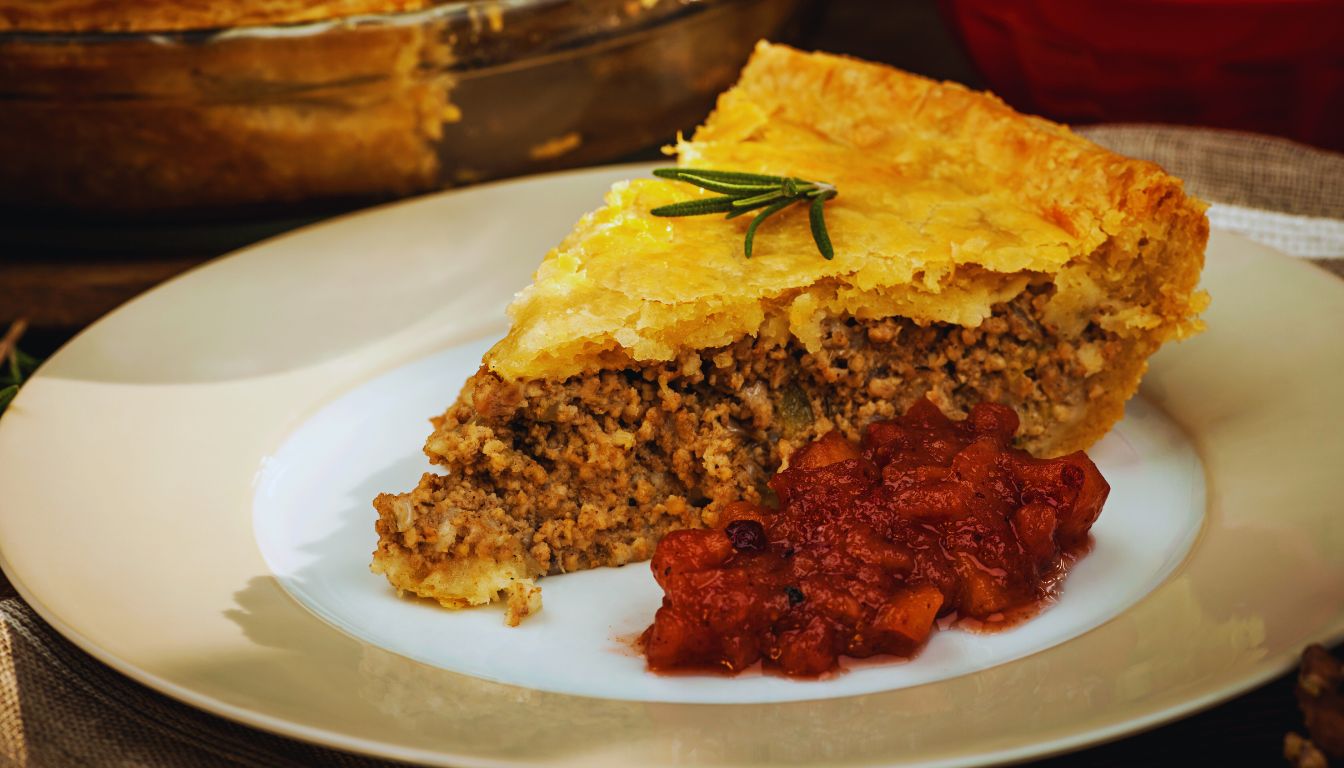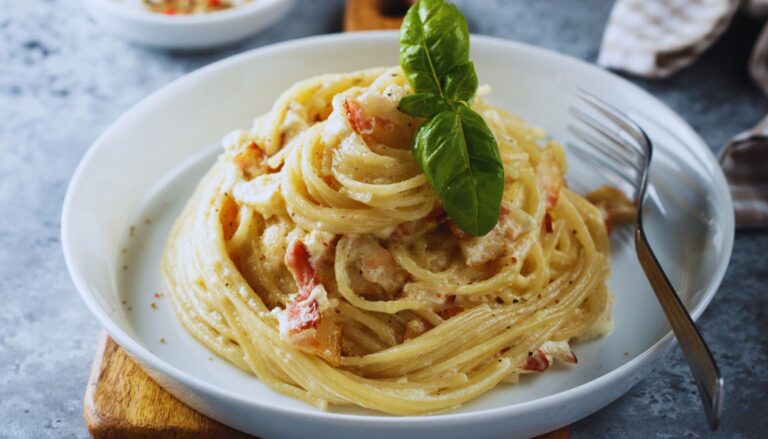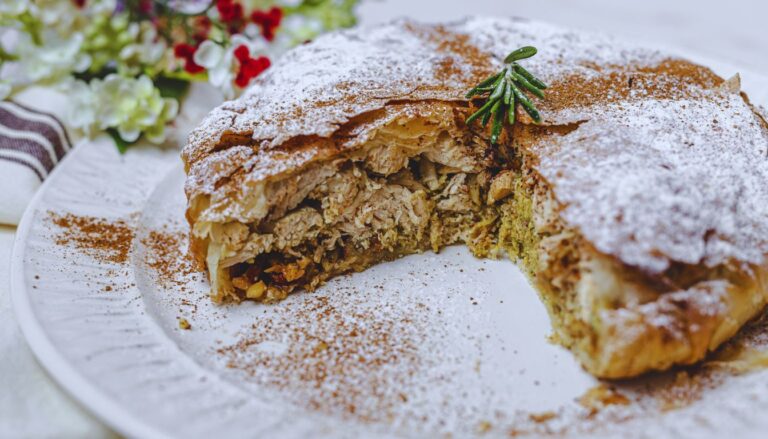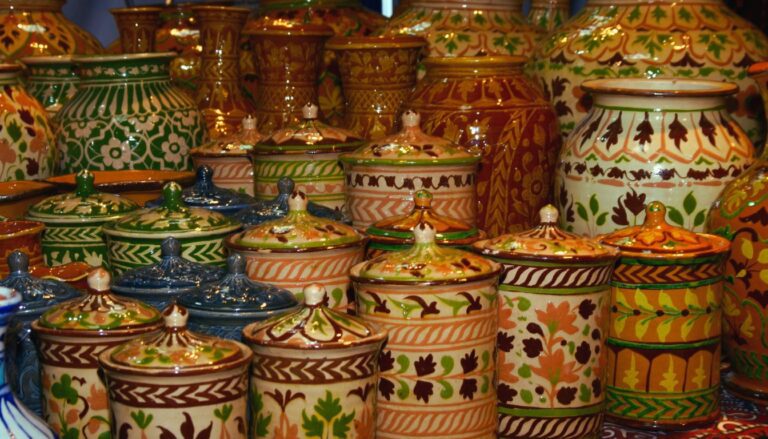Tourtière, Quebec City Canada
In the heart of Quebec City, where cobblestone streets whisper tales of French-Canadian heritage, the beloved Tourtière stands as a testament to centuries of culinary tradition. This hearty meat pie, encased in golden, flaky pastry, embodies the warmth of Quebec winters and the spirit of family gatherings. More than just sustenance, it represents the resilience and creativity of early French settlers who adapted their cuisine to the abundant resources of the New World.
Table of Contents
Origins and History
The story of Tourtière begins in the early days of New France, dating back to the 17th century. Originally named after the tourte, a now-extinct passenger pigeon once abundant in North America, the pie evolved as settlers adapted to local ingredients. Quebec’s harsh winters necessitated hearty, preserved foods, leading to the development of this robust meat pie.
The dish gained prominence in the Saguenay-Lac-Saint-Jean region before becoming a staple throughout Quebec. Each region developed its unique variation, reflecting local ingredients and family traditions:
- Coastal regions incorporated seafood
- Inland areas favored wild game
- Urban centers adapted with readily available meats
Cultural Significance
Tourtière holds a revered place in Quebec’s cultural identity:
- Central to Réveillon (Christmas Eve celebrations)
- Symbol of French-Canadian culinary heritage
- Representation of family traditions and recipes
- Connection to Quebec’s agricultural roots
- Emblem of cultural preservation
The pie serves as a bridge between generations, with recipes passed down through families, each carrying its own secret blend of spices and techniques. It represents the survivance – the determination to preserve French-Canadian culture.
Ingredients and Preparation
Traditional Tourtière requires careful attention to detail and quality ingredients:
Essential Components:
- Flaky pastry crust
- Ground meat (traditionally pork, beef, or game)
- Finely diced onions
- Fresh garlic
- Traditional Quebec spice blend
Signature Spices:
- Ground cinnamon
- Ground cloves
- Nutmeg
- Savory
- Black pepper
Preparation Method:
- Creating the perfect pastry with precise butter-to-flour ratio
- Seasoning and cooking meat filling until perfectly spiced
- Achieving ideal texture through proper moisture control
- Assembling with decorative top crust
- Baking until golden brown
Where to Try It
Notable Establishments:
- Aux Anciens Canadiens: Historic restaurant in Quebec City’s oldest house
- Restaurant Le Saint-Amour: Refined interpretation of traditional recipe
- Paillard: Beloved local boulangerie with excellent Tourtière
Neighborhood Recommendations:
- Explore Old Quebec (Vieux-Québec)
- Visit local markets in Saint-Roch
- Discover family-run establishments in Saint-Jean-Baptiste
Eating Etiquette and Customs
Traditional serving customs enhance the experience:
- Served hot with accompaniments
- Often enjoyed with fruit ketchup or chutney
- Typically part of a larger family meal
- Respected as a main course
- Accompanied by simple green salad
Seasonal Considerations
While available year-round, Tourtière has special seasonal significance:
- Peak popularity during winter months
- Traditional Christmas Eve dish
- Featured at winter festivals
- Summer variations may be lighter
- Special holiday versions available during festive seasons
Modern Interpretations
Contemporary chefs honor tradition while embracing innovation:
- Vegetarian versions using mushrooms and legumes
- Lighter pastry alternatives
- Gourmet interpretations with premium ingredients
- Individual-sized portions
- Frozen varieties for convenience
Practical Information and Travel Tips
Essential guidance for experiencing authentic Tourtière:
- Reserve restaurants during holiday season
- Visit local markets for homemade versions
- Learn basic French phrases to enhance experience
- Consider timing visits during winter festivals
- Ask about regional variations
- Look for family-owned establishments
- Take cooking classes when available
Making Your Tourtière Journey Memorable
Immerse yourself in Quebec City’s rich culinary heritage by pairing your Tourtière experience with visits to historic sites and local markets. Take time to learn about each establishment’s unique recipe and story. Remember that every bite connects you to centuries of French-Canadian tradition, winter celebrations, and family gatherings around warm, fragrant pies that have sustained generations.













